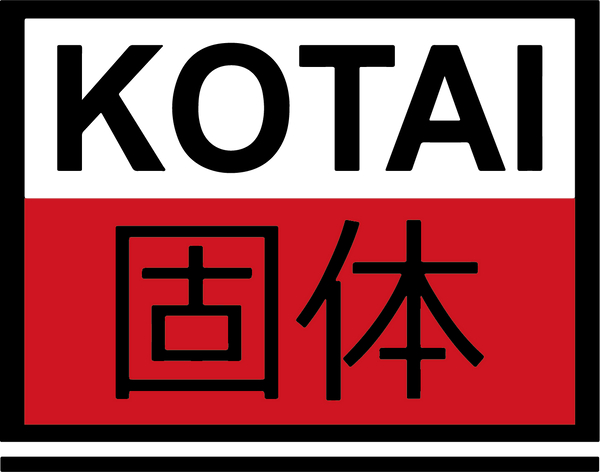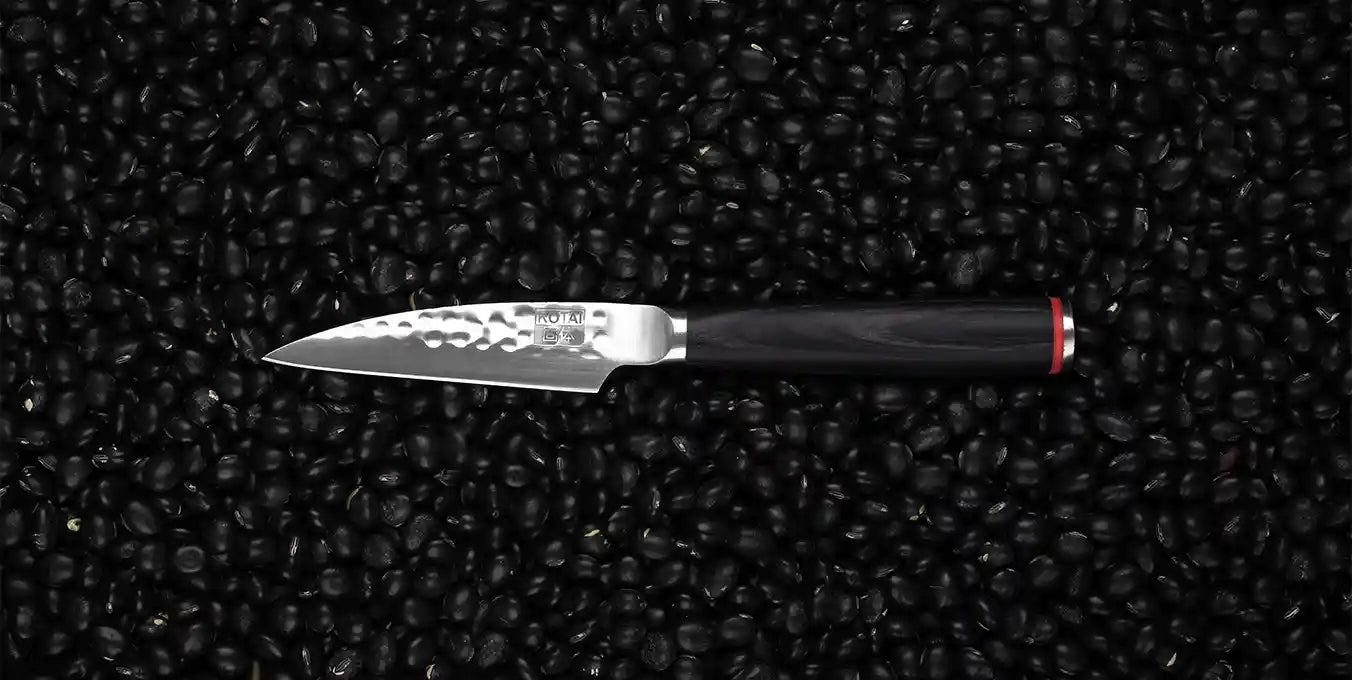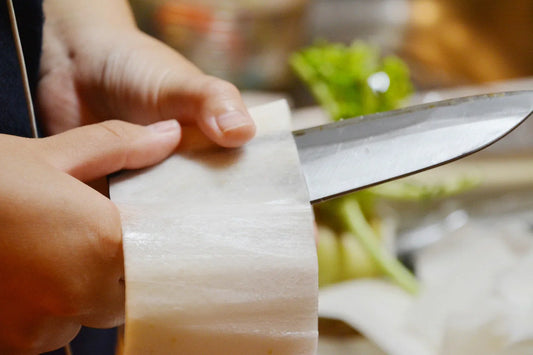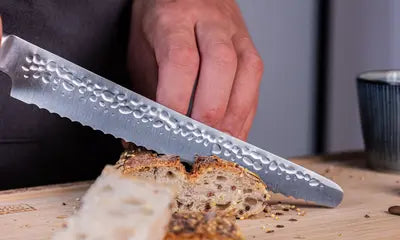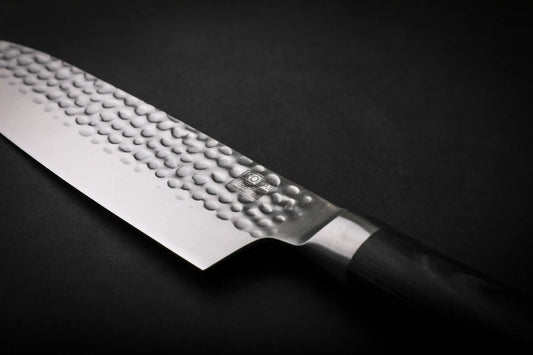Discover our guide to choose the best knives to have in your kitchen...
"But which are the essential knives to have in my kitchen?" is a pretty recurrent question... Honestly, the knives you need highly depend on your use, your culinary preferences, and your relationship with cooking. This article presents - in our opinion - the essential knives. Bear in mind that the golden rule for buying good, reliable knives is to prioritize quality over quantity.
TIP: The price of a knife can greatly vary; a higher price often justifies the high quality of the steel, which translates into a good edge retention.
The Gyuto; or the chef's knife
The Gyuto is a Japanese alternative to the classic Western chef's knife. Given its meaning, the "GYUTO" (or "cow sword") was originally often used to slice beef. Nowadays, it is renowned for its versatility and universal use, even if it remains an expert meat slicer.
Features:
The Gyuto is a long knife (ranging from 14 to 30 centimeters) that has a slight curve between the middle of the blade and the tip, making it ideal for many cutting techniques; using "push-and-pull cutting", for mincing, or for using a rocking motion.
The balance of a Gyuto is one of its greatest advantages. Proper weight distribution of the blade and handle is essential, as it makes the knife easier to handle when cutting.
TIP: Choosing a full tang knife will give you perfect balance, as the blade extends into the handle. It will also be more robust than a half-silk knife. Weight is an important consideration when buying a knife, as it will help you to be comfortable (or not) when cutting.
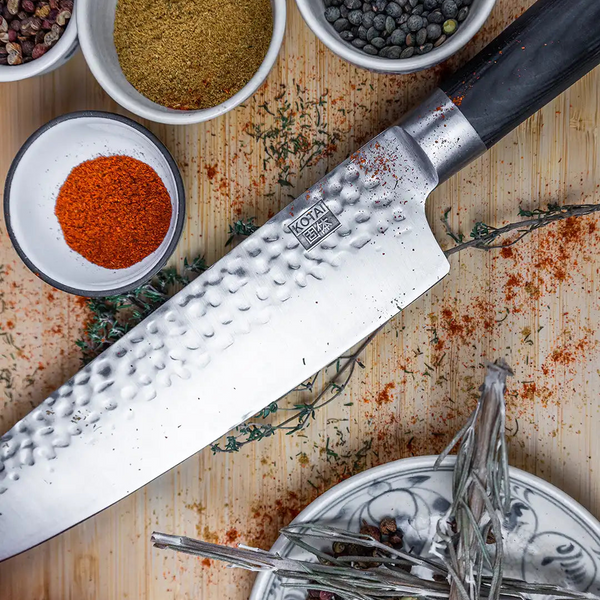
KOTAI’s Gyuto Chef's Knife PAKKA Collection
Our Gyuto PAKKA Collection is forged from Japanese 440C stainless steel with a high carbon content, making its cutting edge even more durable (HRC 60). Its 20-centimeter blade is the ideal size for the perfect balance between handle and blade. The Gyuto KOTAI combines the best of two distinct worlds: Japanese sharpness and German strength. Finally, the hammering (present on all our knives) on the blade prevents food from sticking to the knife when cutting.
+ Want to see our Gyuto in damascus steel?
The Paring Knife; or peeling knife
The paring knife is a key element in the kitchen, complementing the chef's knife, with which you can make many complex and precise cuts thanks to its small size. Easy to handle, you will be able to peel and slice your fruit and vegetables directly in your hands, or even remove the "eyes" from potatoes. This is an essential knife that will enable you to prepare your ingredients quickly and efficiently.
Features:
Paring knives have a sharp, pointed blade that generally measures 8 to 10 centimeters. They are designed to be held in the hand, offering greater control and precision.
There are three main shapes of paring knife:
- Bird's beak (or Toucan): Often used for peeling, trimming and making very fine, precise cuts.
- Spearhead: A rather classic shape, this is a "mini" version of the chef's knife. It can be used for many tasks such as peeling and shaping an ingredient, as well as many other delicate jobs.
- Sheepsfoot: A straight blade, ideal for straight cuts such as julienne.
TIP: High-carbon stainless steel gives knives a finer edge that stays sharper for longer!
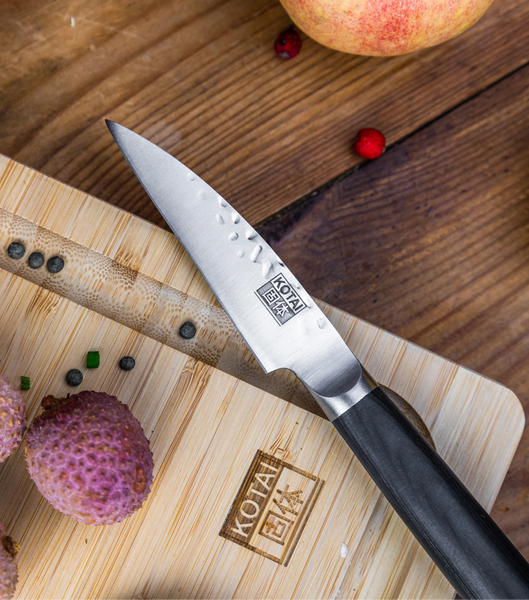
KOTAI’s Paring Knife PAKKA Collection
Our PAKKA Collection paring knife is a hybrid between a sheepsfoot and a spearhead. The edge of the blade is largely flat, for precision and easy peeling, while the tip is slightly pointed for complex tasks.
Its round, hand-polished, water-resistant black Pakkawood handle ensures a firm, comfortable grip even with wet hands (right- or left-handed).
+ Want to see our paring knife PAKKA in damascus steel?
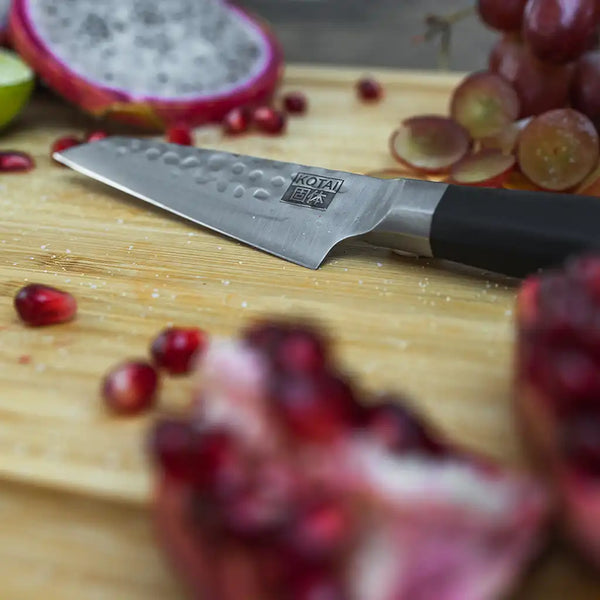
KOTAI’s Paring Knife BUNKA Collection
Like its equivalent, our BUNKA Collection paring knife has a 9-centimeter blade with a flat profile, but its tip is different, with an inverted Tanto or K-tip profile.
Its handle also differs thanks to its octagonal shape made from ebony - a magnificent dark natural wood - famous for its strength and ability to age well.
+ Want to see our paring knife BUNKA in damascus steel?
The Serrated Knife; or bread knife
A serrated knife, often nicknamed a "bread knife" due to its serrated blade, is capable of cutting gently without crushing or even damaging foods with hard surfaces but soft cores, such as cakes, tomatoes, roasts, and of course bread!
Features:
A sawing motion should be used when using a serrated knife, this will allow the teeth of the blade to gently grip and cut the ingredient. For this reason, this knife is not recommended for small ingredients.
In addition, a serrated knife will enable you to reduce the pressure exerted when cutting, as the teeth of the blade do the work for you!
TIPS: We advise you to select a model with few sharp teeth and deep slots between them. Note that the deeper the slot, the larger the surface area, giving you a greater grip.
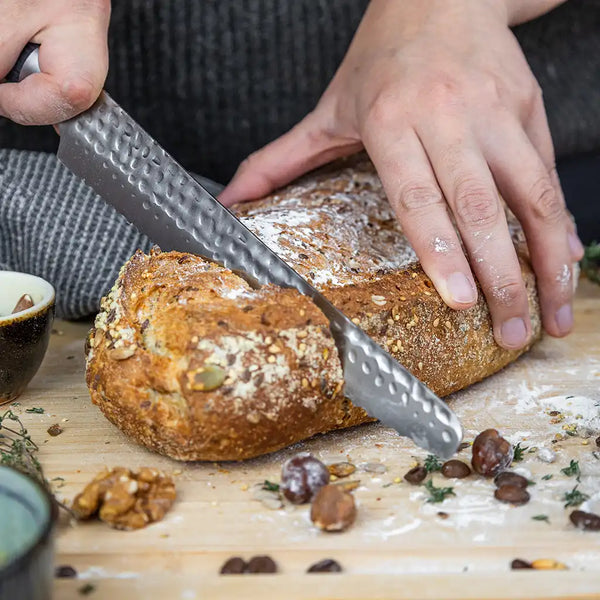
KOTAI’s Serrated Knife PAKKA Collection
Our PAKKA Collection serrated knife - with its 20-centimeter serrated blade - is ideal if you're looking to make delicate cuts in ingredients with hard surfaces and soft cores. Whether it's crusty bread, watermelon or pineapple, our knife will slice them perfectly thanks to its serrated blade!
+ Want to see our serrated knife in damascus steel?
The Fillet Knife; or fish knife
The fillet knife is often associated with the preparation of fish, thanks to its flexible blade that can bend to fit the shape of the fish perfectly. However, and as its name suggests, it can also be used to make meat fillets.
Features:
Thanks to its flexible, thin, narrow blade and very sharp tip, the filleting knife is ideal for making precise cuts as well as maneuvering around fish bones. These features, combined with its great mobility, make it a real asset when preparing fish!
TIPS: Investing in a quality filleting knife is essential to ensure that your fish and/or meat will turn out beautifully.
- Favor high quality stainless steel (which will not tarnish) with a full protrusion to increase the knife's control, stability and balance.
- The blade length you select will depend on your use: short blade = small fish / long blade = large fish.
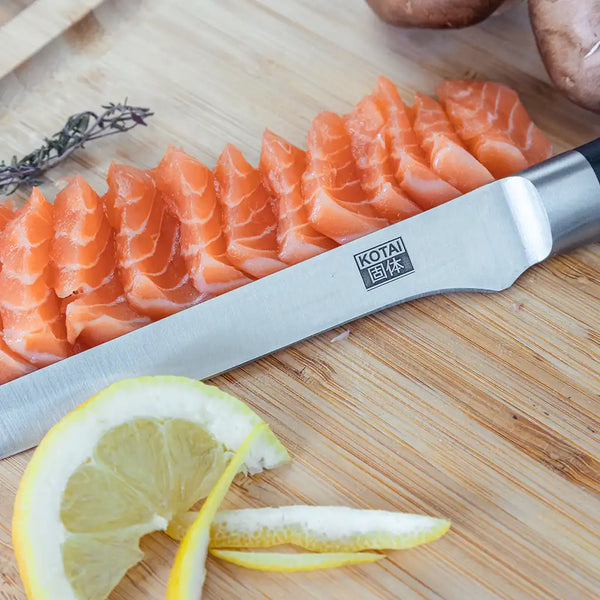
KOTAI Fillet Knife PAKKA Collection
Our PAKKA Collection fillet knife has a long, thin, flexible 20-centimeter blade that moves easily along the backbone and under the skin of the fish. Thanks to our knife and the narrowness of its blade, you will find it easier to get to the fibrous tissues of the meat. Finally, you can be sure that with its unique flexibility you will minimize your waste, and therefore keep more food!
+ Want to see our fillet knife in damascus steel?
To sum up…
These knives are essential for any chef (amateur or professional), and thanks to their unique functions you will be able to overcome any culinary challenge.
- The chef's knife for chopping, slicing and mincing.
- The paring knife for peeling and cutting quickly in hand.
- The serrated knife for cleanly slicing food with a hard surface but delicate interior.
- The fillet knife for efficient preparation of fish and meat.
Having quality knives that suit you will make cooking much more enjoyable, not to mention more efficient! With this in mind, KOTAI offers you a wide range of knives to suit all your needs, so you can cook with confidence.
